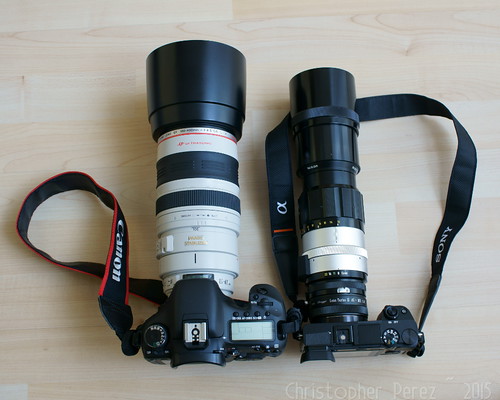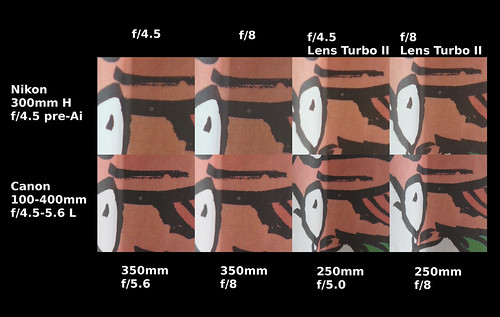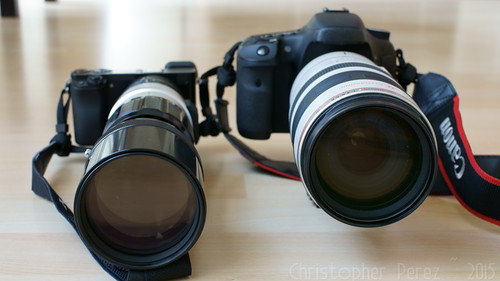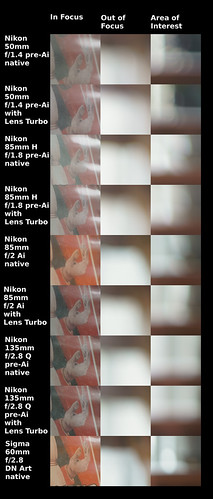When I took a look at the Sony A6000 - Nikon 300mm f/4.5 H pre-Ai and tried to compare it against the Canon 7D - 100-400mm f/4.5-5.6 L combination, I relied on the Canon's contrast detect AF system. I also relied on the 7D's smaller sensor and stronger anti-aliasing filter.
I realized later that the comparison likely proved nothing. If I was interested in seeing how the ancient (c.1972-ish) Nikkor really compared against the much more modern-flourite-element Canon100-400L, then I'd have to normalize my comparison conditions. For this, I would use the Sony A6000 and the appropriate lens adapters. I would also need to carefully manually focus both lenses, which would be my only option on the A6000 for the adapters and lenses I have.
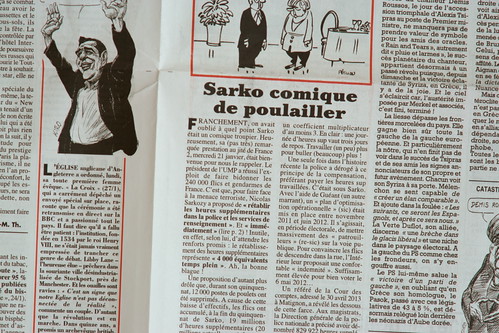
With these things in mind, here is another look at the Nikon 300mm f/4.5 H pre-Ai and the Canon 100-400mm f/4.5-5.6 L.
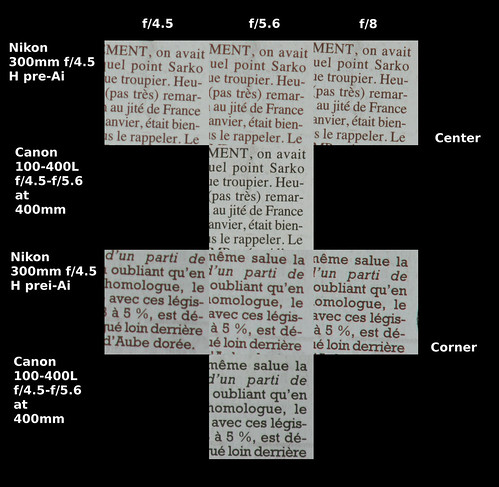
My observations remain similar to the ones I made in the previous post.
One thing that I've noticed about internal focusing lenses is that the image magnification is much less than the old rack-focus optics. In this comparison the Canon needed to be set to 400mm to match the scene size of the Nikon 300mm focused to around 14feet. I encountered a similar situation when I using a Canon 24-105L and Nikon 85mm on a near-distance subject.
The Nikon 300mm delivers a little less contrast to the sensor than the Canon 100-400L. This can be easily accounted for during image processing. As for resolution, it's very difficult for me to find any meaningful difference between the two lenses. The Nikon might be slightly softer in the corners at f/4.5 (because of spherical aberrations?) than the Canon at f/5.6. A light smart sharpening would bring the Nikkor image resolution right in line with the Canon's.
I find this interesting in light of the fact the Nikkor is 4 decades old and more than 1500USD cheaper than the Canon.
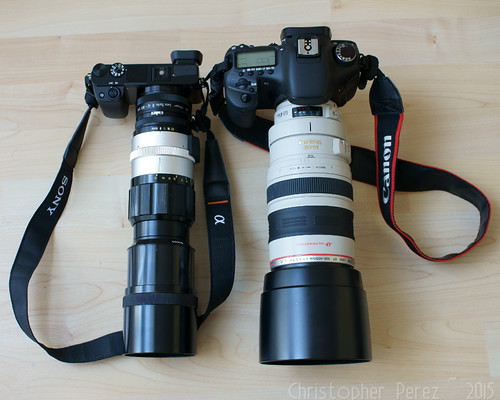
I realized later that the comparison likely proved nothing. If I was interested in seeing how the ancient (c.1972-ish) Nikkor really compared against the much more modern-flourite-element Canon100-400L, then I'd have to normalize my comparison conditions. For this, I would use the Sony A6000 and the appropriate lens adapters. I would also need to carefully manually focus both lenses, which would be my only option on the A6000 for the adapters and lenses I have.

With these things in mind, here is another look at the Nikon 300mm f/4.5 H pre-Ai and the Canon 100-400mm f/4.5-5.6 L.
- Sony A6000 camera, ISO100, "A" mode, "standard" image style settings, shot in RAW format
- Big sturdy Manfrotto tripod
- Nikon 300mm f/4.5 H shot at f/4.5, f/5.6, and f/8
- Canon 100-400mm f/4.5-5.6L shot at f/5.6 and 400mm (to match the scene dimensions of the Nikkor)
- RAW images converted to jpg at 100percent quality using Sony's software - no image adjustments were made at the time of conversion
- 600x600pixel segments were taken out of each file - no adjustments to the image were made during the cut/paste process

My observations remain similar to the ones I made in the previous post.
One thing that I've noticed about internal focusing lenses is that the image magnification is much less than the old rack-focus optics. In this comparison the Canon needed to be set to 400mm to match the scene size of the Nikon 300mm focused to around 14feet. I encountered a similar situation when I using a Canon 24-105L and Nikon 85mm on a near-distance subject.
The Nikon 300mm delivers a little less contrast to the sensor than the Canon 100-400L. This can be easily accounted for during image processing. As for resolution, it's very difficult for me to find any meaningful difference between the two lenses. The Nikon might be slightly softer in the corners at f/4.5 (because of spherical aberrations?) than the Canon at f/5.6. A light smart sharpening would bring the Nikkor image resolution right in line with the Canon's.
I find this interesting in light of the fact the Nikkor is 4 decades old and more than 1500USD cheaper than the Canon.


